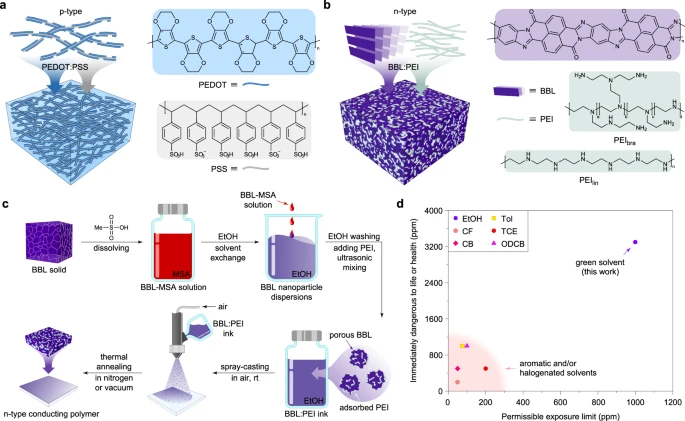Science Daily April 21, 2021
Today, the most used conducting polymer is the p-type conductor PEDOT:PSS. However, many electronic devices require a combination of p-types and n-types to function. There is no n-type equivalent to PEDOT:PSS. An international team of researchers (Sweden, South Korea) has developed a conductive n-type polymer ink, BBL:PEI which is stable in air and at high temperatures. It comes in the form of eco-friendly ink with ethanol as the solvent. The ink can be deposited by simply spraying the solution onto a surface, making organic electronic devices easier and cheaper to manufacture. Printable n-type mixed ion-electron conductor has several technological implications for realizing high-performance organic electronic devices. BBL:PEI inks hold promise for the development of next-generation bioelectronics and wearable devices, in particular targeting novel functionality, efficiency, and power performance…read more. Open Access TECHNICAL ARTICLE

Material processing. Credit: Nature Communications volume 12, Article number: 2354 (2021)